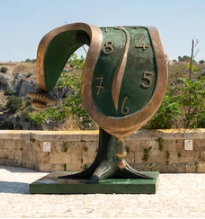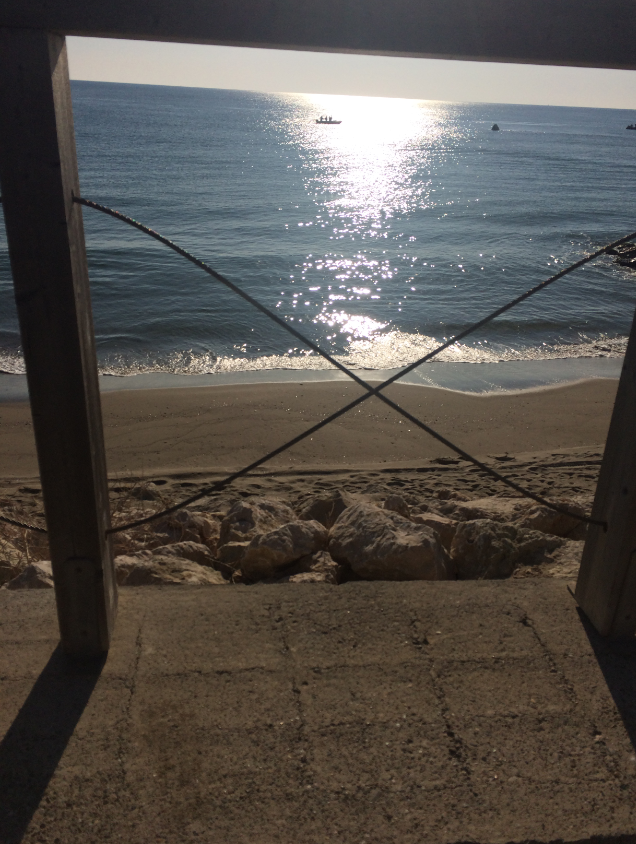Dali, Skulls & Crossbones in Italy
Matera, Italy - the 2019 European Cultural Capital
An actual travel blog. Churches covered in demons, a strange stone hut village, and a Salvador Dali secret, all in Italy’s instep.
The distorted face screamed silently as it swooped down towards me, the mouth opened wide to show missing teeth, made more ghoulish in the stark shadows.
Nearby a child screamed as flames consumed it up to the waist, while underneath it was a skull and crossbones carved into the stone.
I frowned.
These were not what I expected to see on a church front.
Chiesa del purgatorio, Matera. Yes, it’s a church.
Chiesa del Purgatorio in Matera, Basicilicata in southern Italy.
Constructed in the mid-18th century, it is a church where people could go to prey for the souls trapped in limbo between heaven and hell.
But Matera is much, much more than a place with a church of Purgatory. It is actually claimed to be the third oldest continually inhabited settlement in the world (after Aleppo and Jericho), lived in for at least 9000 years.
Hostel humour at the one I stayed at in Matera. At the end of winter and the covid situation starting to develop (late February - Milan was quarantined by this time) I had the entire hostel to myself.
Matera’s origins started in prehistoric times as cave dwellings – or sassi as they are called in Italian. It consists of two canyons pockmarked with caves which made perfect shelters.
Over time they dug out the caves and made real homes of them, to the point it became a proper city-town.
As the town grew up above it, with mod-cons like electricity and sewerage, the caves became the slum dwellings – dark and dank and lived in by the poor, families of 5 and 10 in these strings of rooms now carved back into the cliff face. The animals were kept inside overnight, and through the winter adding to what must have been rather odourific abodes.
In 1952 it was decided that this was no longer acceptable, and the residents were forcibly removed to other parts of town. As gloomy as their lives may have been, this would have caused greater hardships – being forced to move from ancestral homes, linked to family businesses handed down through the generations, and put into more expensive housing at a distance from all that was familiar.
Not a unique story.
But the culmination of all this was that in the 80s a growing interest in tourism came along and many of the old cliff homes were bought up for dirt cheap and turned into modern dwellings. Astute, or maybe just lucky, now these canyons are a world heritage site, a rabbit warren of narrow streets, businesses selling crafts to the tourists, restaurants and cafés, pubs and airbnbs with superb views onto a novel landscape.
It’s hard to see from the photo which looks like many towns in Italy, but the buildings are mostly just a front, with the rooms built into the rock behind them. So these buildings aren’t behind each other, but on top of each other.
To promote tourism the EU chooses somewhere every year as the European Capital of Culture, and in 2019 it was Matera’s turn, giving it an input of funding and advertising and a much higher tourist profile.
Matera, as it happens, is in Basilicata, just 20 minutes from Montescaglioso where I lived for two months at the beginning of 2020, so I had time over several visits to explore from the top to the bottom of this extraordinary place.
I never tired of it.
Matera Rock Church, one of the many churches.
Medieval churches, cafes with amazing views, a huge cistern or water system they recently discovered, life-folk museums of the original dwellings still set up showing how it used to be – such a jumble on top of each other that photos simply don’t show it.
Dali’s statue at the top of the sassi town.
One surprise and I imagine a little known fact is that it also has a Salvador Dali exhibition (at least, it did in early 2020) with several of his statues at various spots around town – the wonky elephant at the top and a melted clock. The latter was right down the bottom in front of his museum and exhibition.
Dali’s melting clock at the bottom of the sassi. Notice the drips off the bottom of the clock?
In this little explored area of southern Italy, Basilicata and Puglia, besides the delightful coast there is an ancient Greek trading centre called Metaponto about half an hour south of Montescaglioso (and the reason Montescaglioso is bigger than the other villages around – because the trade routes from Metaponto ran straight through it. Also explains the Greek ruins found in Montescaglioso, including a pair of very large statues.)
In Metaponto there is a museum with quite an extensive display from the excavation there.
Alberobello, a borrowed photo. It’s somewhere I still need to visit. The village is full of these strange stone houses which are completely unique to this valley near Bari.
I didn’t visit Lecce which I was told was lovely, or Alberobello – another unique and extraordinary village. But I did see some of these cottages near Bari – scattered across the countryside. Called trulli, they are traditional Apulian dry stone huts with a conical roof, and unique to just that valley. Alberobello is a village of them, a collection in one spot, making it an exceptional day trip from Bari. Just like you can stay in Matera in an airbnb which is an old cliff dwelling, in Alberobello you can stay in one of these trulli cottages.
The sea at Metaponto, the ancient Greek port half an hour from Montescaglioso.
Even Bari has its old town, and the coastline northwards has some exceptionally pretty spots.
The thing is, there are so many amazing places – the numerous mountaintop villages, the sassi grottoes of Matera, the extraordinary houses collected together in Alberobello – none of which I’d heard of before I arrived in the region (except the mountaintop village, and that was still recent news to me). The world is full of these unheard-of gems.
The world is truly an amazing place.
February, 2020







